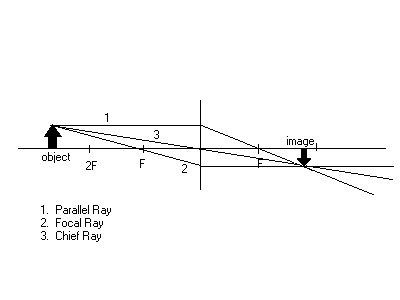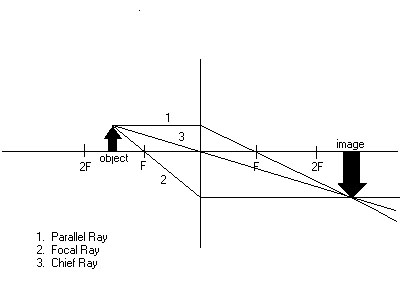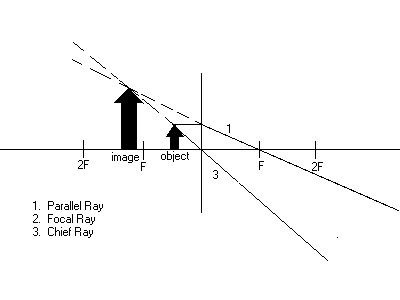|
|
|
|
| Solutions |
| Q1:
Describe how a distant object appears through a converging lens.
The image of the object is real, inverted, and reduced at a distance(beyond 2F).
Q2: Look at closer objects and very close objects, describe the images. Are there any differences? When the object is close(between 2F and F) the image is real, inverted , and enlarged.
When the object is very close(between F and the lens) the image is virtual, erect , and enlarged.
The differences is that when the object is close the image is real and inverted, but when the object is very close the image is virtual and erect. Q3: What are the differences between converging lenses and spherical mirrors? The only difference between converging lenses and spherical mirrors exists when the object is at a distance. In a spherical mirror when the object is at a distance the image is real, erect, and reduced where as in a converging lens when the object is at a distance the image is real, inverted, and reduced. Q4: Experimentally calculate the focal length of the lens. Depending on the size and curve of the lens the focal length will vary, but with a typical lens the focal length was experimentally determined to be ~1.5 in. Q5: Characterize the image that was produced on the 3" x 5" and sketch the ray diagram. The image of the object is real, inverted, and reduced.
Q6: State rough estimate values for hi, ho, M, di, and do. If the object is 5 in. tall(ho) and placed 10 in.(do) from lens(using the lens from above) then DI =1.76 in., hi=-.90 in., and M=-.18 in. Q7: Using the thin lens equation mathematically calculate the focal length of your lens. The thin lens equation is 1/do+ 1/DI= 1/f this equals
a focal length of 1.49 in. |
|
|
|
|
|


